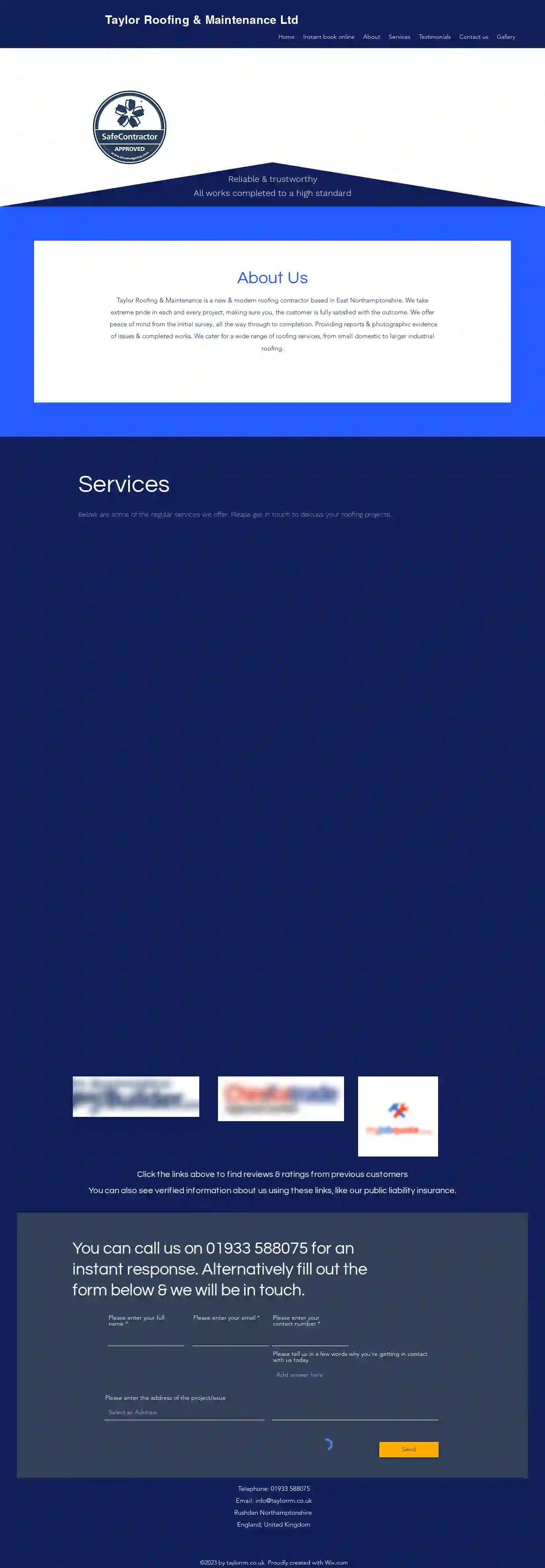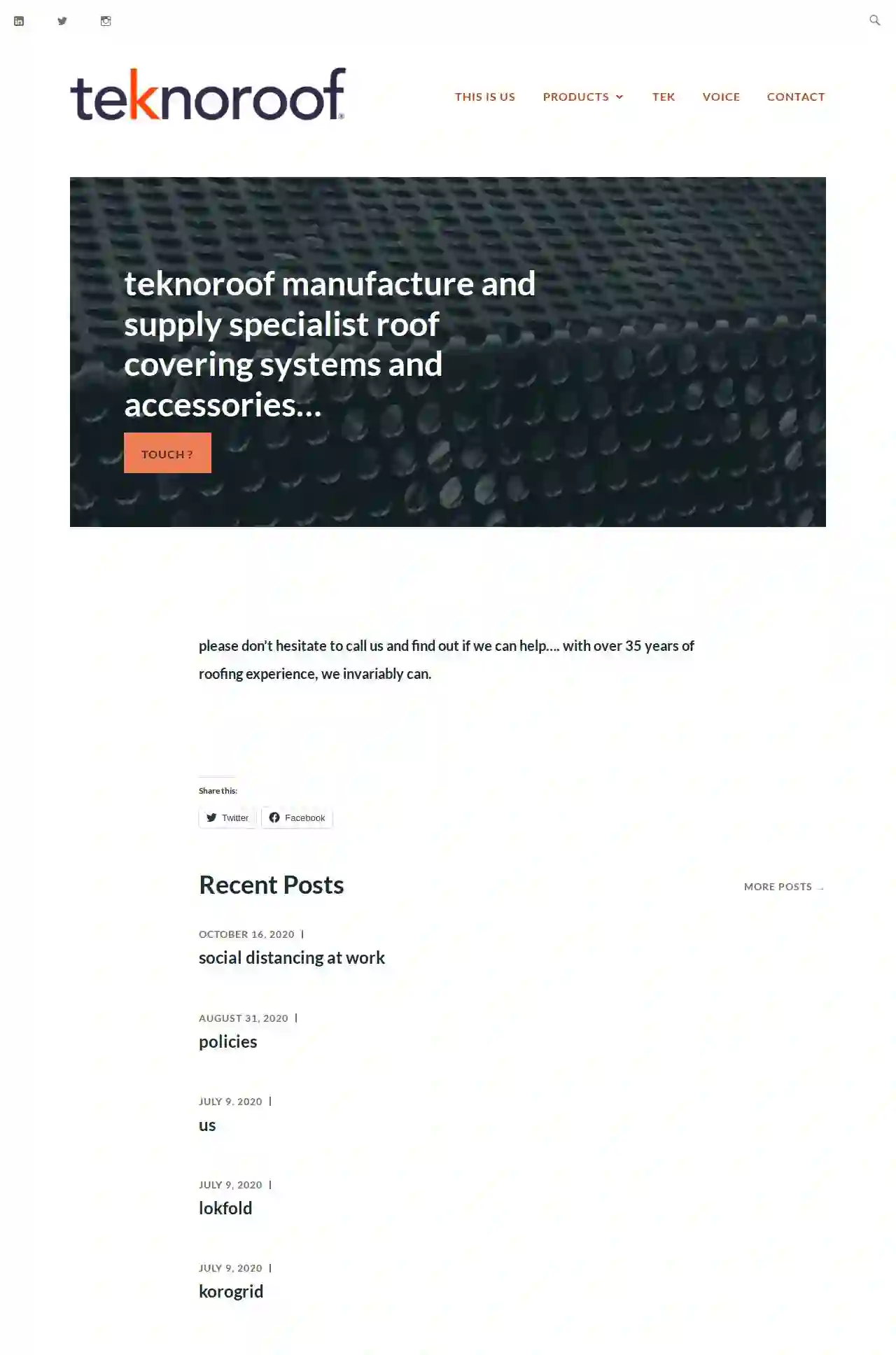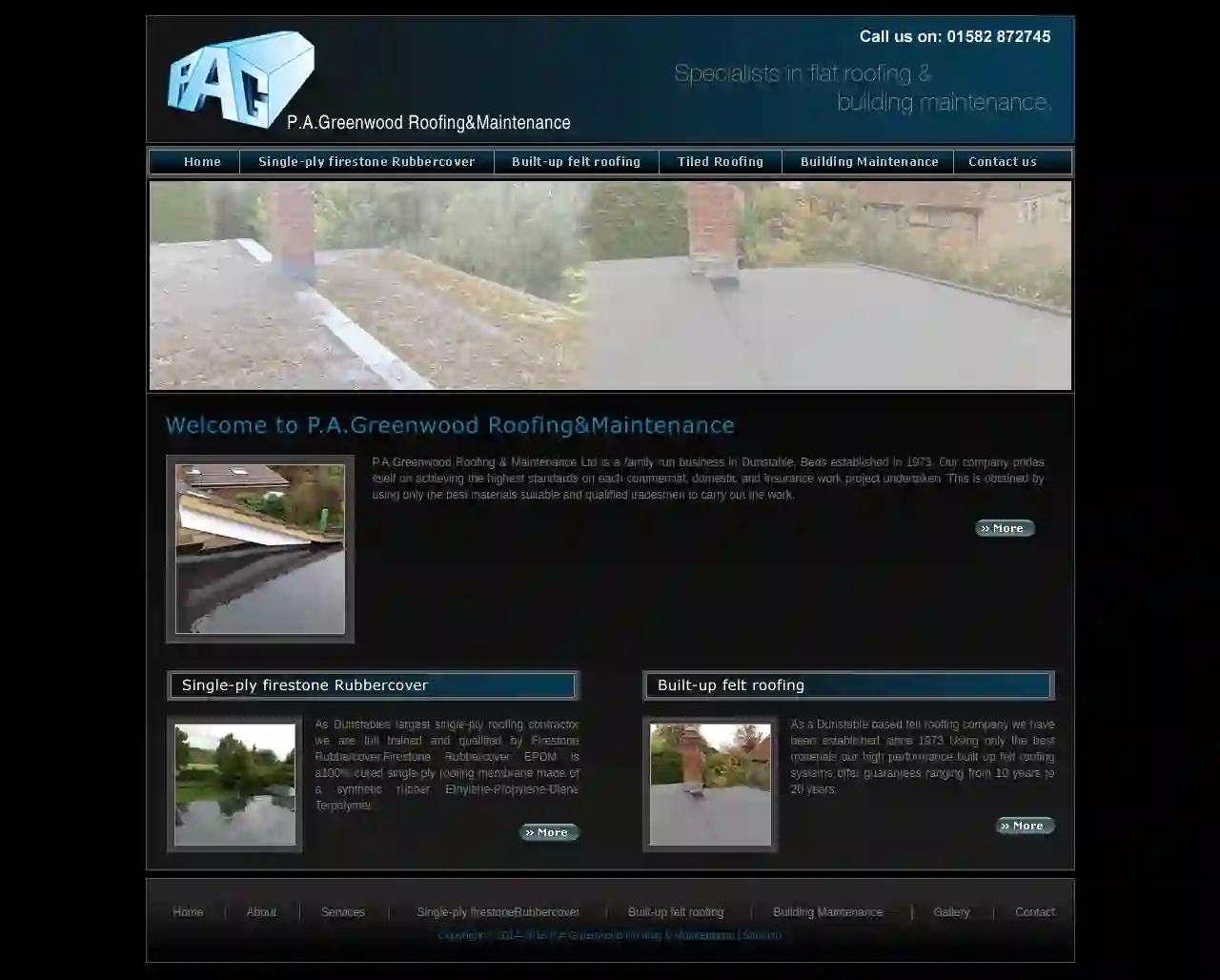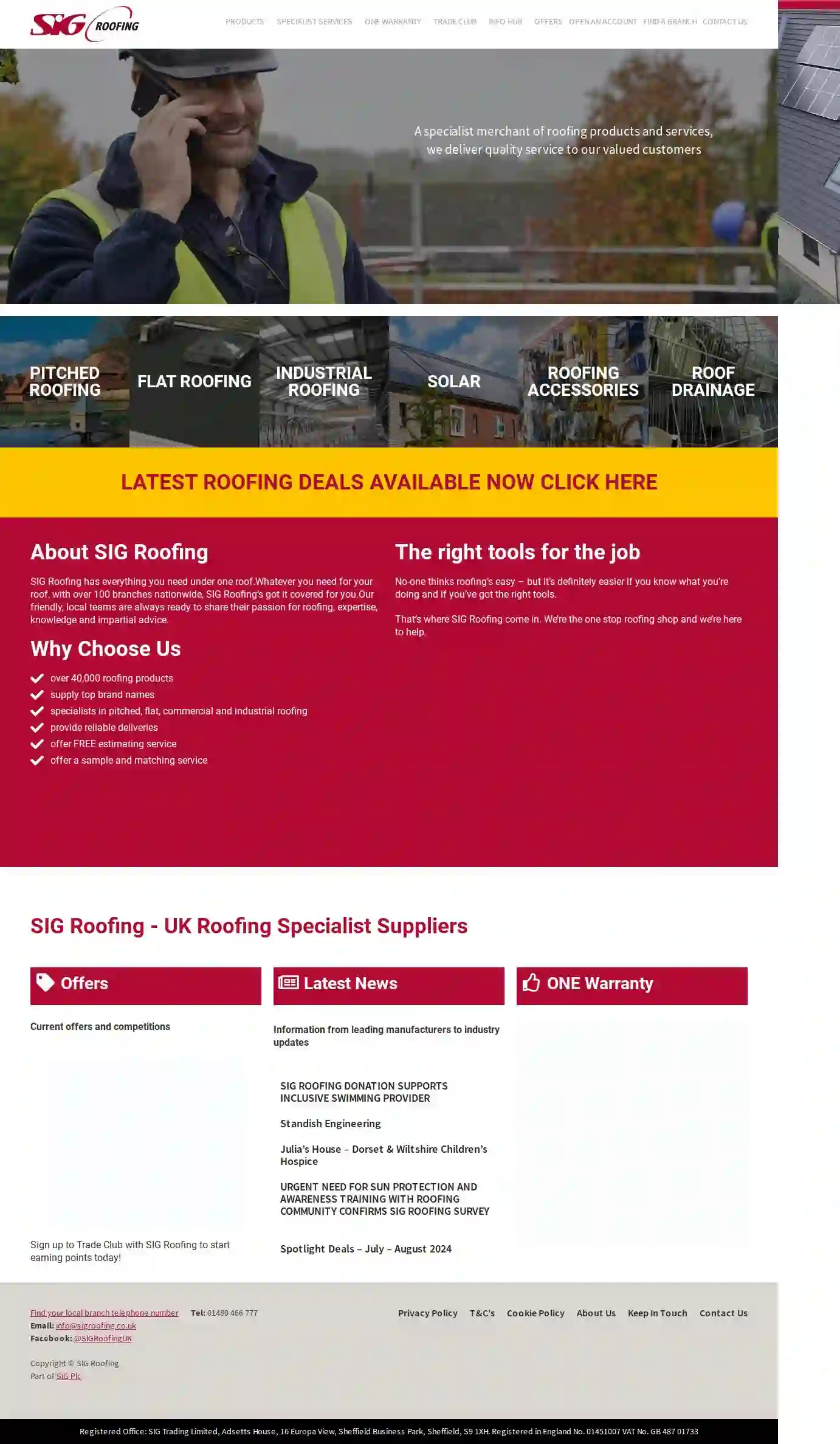Roofing Companies Wolverton
Find Roofing Contractor in Wolverton
Receive multiple Roofing Companies quotes for your project today! Compare profiles, reviews, accreditations, portfolio, etc... and choose the best service.
- Pr
Proberts Roofing Services
55 reviewsDunstable, GBMeta © 2024
- Services
- Why Us?
- Gallery
Get Quote 
Taylor Roof Maintenance
Rushden, GBTaylor Roofing & Maintenance is a new & modern roofing contractor based in East Northamptonshire. We take extreme pride in each and every project, making sure you, the customer is fully satisfied with the outcome. We offer peace of mind from the initial survey, all the way through to completion. Providing reports & photographic evidence of issues & completed works. We cater for a wide range of roofing services, from small domestic to larger industrial roofing.
- Services
- Why Us?
- Gallery
Get Quote
A R Roofing
52 reviewsNorthampton, GBA R Roofing Services Ltd is a family run roofing company based in Northampton, Northamptonshire, with over 20 years of experience in the roofing industry. We pride ourselves on providing excellent workmanship and a high level of customer service. We cover all aspects of roofing, including domestic roof repairs, commercial roofing, and industrial properties. Our services extend to areas like Northampton, Northamptonshire, Bedfordshire, and Milton Keynes. We are approved fitters of the Firestone EPDM Rubber Roofing Membrane for flat roofs and specialise in the supply and fitting of Velux roof windows. We are committed to customer satisfaction, offering free quotations, reliable service, and a guarantee on all our work. As members of the Northamptonshire Buy With Confidence Scheme, we have been vetted by Trading Standards, CRB Police checked, and credit checked, ensuring our customers receive a trustworthy and reliable service.
- Services
- Why Us?
- Accreditations
- Gallery
Get Quote
Teknoroof Ltd
51 reviewsNorthampton, GBTeknoroof manufacture and supply specialist roof covering systems and accessories. With over 35 years of roofing experience, we invariably can help.
- Services
- Why Us?
- Gallery
Get Quote
Peter.A.Greenwood Roofing Dunstable
51 reviewsDunstable, GBP.A.Greenwood Roofing & Maintenance Ltd is a family run business in Dunstable, Beds established in 1973. Our company prides itself on achieving the highest standards on each commercial, domestic and insurance work project undertaken. This is obtained by using only the best materials suitable and qualified tradesmen to carry out the work. As Dunstables largest single-ply roofing contractor we are full trained and qualified by Firestone Rubbercover. Firestone Rubbercover EPDM is a100% cured single-ply roofing membrane made of a synthetic rubber Ethylene-Propylene-Diene Terpolymer. As a Dunstable based felt roofing company we have been established since 1973 Using only the best materials our high performance built up felt roofing systems offer guarantees ranging from 10 years to 20 years.
- Services
- Why Us?
- Accreditations
- Gallery
Get Quote
Alternative Roof Solutions
53 reviewsSt James Mill Business Park, 5 Millbrook Close, Northampton, NN5 5JF, GBAlternative Roof Solutions is a well-established company based in Northampton, Northamptonshire, specializing in replacing polycarbonate or glass conservatory roofs with solid conservatory roofs. With over 30 years of experience, they offer a cost-effective solution to transform your conservatory, providing a range of high-quality finishes and extras to complement your home. Their skilled installers take pride in their work and ensure a smooth and easy process for their customers. They are committed to providing a service unmatched by their competitors, combining quality workmanship, superior knowledge, and low prices. Alternative Roof Solutions also supply and fit a full range of uPVC windows and doors, including beautiful bifold doors, to help you completely transform your conservatory. All conservatory roof replacements come with a 10-year insurance-backed guarantee.
- Services
- Why Us?
- Gallery
Get Quote
LKN Roofing Shortstown
GBAt LKN Roofing Shortstown, we are passionate about delivering a service that will exceed our client’s expectations. We do this by offering the best possible customer care and ensuring our roofing work is of the highest quality. Our roofers have decades of combined experience and have tackled every imaginable type of roofing repair and installation, so you can be sure you’re in safe hands with us. This may be why we are becoming known as the best roofing contractor in Shortstown, Bedfordshire, and the surroundings. We always work on the principle of keeping things simple, and ensure we are providing: Transparent, dependable advice from a local and trustworthy roofer. Roofing solutions that will meet all of your needs, and last for years to come. An honest and reliable service. Fantastic prices in comparison with others on a like-for-like basis. If you want to learn more about our roof repair, maintenance, and installation services, we’d love to hear from you. Please get in touch with us and schedule your free site survey.
- Services
- Why Us?
- Gallery
Get Quote
Warkton Roofing Co Ltd
3.737 reviewsTrafalgar Road, Warkton House, Kettering, NN16 8DB, GBWarkton Roofing is a family-run roofing company with over 45 years of experience based in Kettering, Northamptonshire. We are a leading roofing contractor and merchant, specialising in all aspects of roofing for both residential and commercial properties throughout Northamptonshire and the surrounding counties. Our team of highly-skilled roofing operatives is dedicated to providing a comprehensive range of roofing services, ensuring a truly elite and personal service for all our clients. We pride ourselves on our commitment to health and safety, offering a 10-year guarantee on all jobs. We are fully insured and strive to go the extra mile to exceed your expectations.
- Services
- Why Us?
- Accreditations
- Gallery
Get Quote
SIG Roofing Northampton
4.217 reviewsNorthampton, GBSIG Roofing is a specialist merchant of roofing products and services, delivering quality service to our valued customers. Established for over 40 years – with branches throughout the UK from Inverness to Plymouth. We have everything you need under one roof. Whatever you need for your roof, with over 100 branches nationwide, SIG Roofing’s got it covered for you. Our friendly, local teams are always ready to share their passion for roofing, expertise, knowledge and impartial advice.
- Services
- Why Us?
- Gallery
Get Quote
KJI Roofing Rothwell
Rothwell, NN14 4JG, GBAt KJI Roofing Rothwell, we are passionate about delivering a service that will exceed our client's expectations. We do this by offering the best possible customer care and ensuring our roofing work is of the highest quality. Our roofers have decades of combined experience and have tackled every imaginable type of roofing repair and installation, so you can be sure you're in safe hands with us. This may be why we are becoming known as the best roofing contractor in Rothwell, Northamptonshire, and the surroundings. We always work on the principle of keeping things simple, and ensure we are providing: transparent, dependable advice from a local and trustworthy roofer. Roofing solutions that will meet all of your needs, and last for years to come. An honest and reliable service. Fantastic prices in comparison with others on a like-for-like basis. If you want to learn more about our roof repair, maintenance, and installation services, we'd love to hear from you. Please get in touch with us and schedule your free site survey.
- Services
- Why Us?
- Gallery
Get Quote
Over 12,314+ Roofers onboarded
Our roofing pros operate in Wolverton and surroundings!
Roofyng.co.uk has curated and vetted the Best Roofing Contractors arround Wolverton. Find a top & trustworthy business today.
Frequently Asked Questions About Roofing Companies
- Style: Consider your home's architectural style and choose a roofing material that complements it.
- Climate: Factor in your local climate conditions. Some materials perform better in extreme heat, cold, or high winds than others.
- Budget: Roofing materials have a wide range of costs. Determine your budget and choose materials that fit your financial constraints.
- Durability and Lifespan: Assess the expected lifespan and durability of different materials.
- Energy Efficiency: Choose materials with good insulation and reflectivity properties to improve your home's energy efficiency.
- Listed Buildings: Buildings with historical or architectural significance.
- Conservation Areas: Areas with special architectural or historical character.
- Changes to Roof Design: If you're making significant alterations to the roof's design, such as adding a dormer window or changing the pitch.
- Hot Climates: Opt for light-colored or reflective roofing materials to reduce heat absorption. Consider tile roofs for their thermal mass and heat resistance.
- Cold Climates: Ensure your roof has adequate insulation and ventilation to prevent ice dams and moisture buildup. Metal roofs can shed snow effectively.
- High-Wind Areas: Choose roofing systems with high wind ratings and properly installed hurricane straps or clips to enhance wind resistance.
- Areas with Heavy Rainfall: Ensure your roof has proper drainage and a waterproof membrane to prevent leaks.
- Asphalt Shingles: 20-30 years
- Metal Roofing: 40-70 years
- Tile Roofing: 50-100 years or more (clay and slate)
- Flat Roofing: 15-30 years (depending on material)
- Slate: 100 years or more
- Wood Shakes or Shingles: 30-50 years (with proper maintenance)
How do I choose the right roofing materials for my home?
Do I need planning permission to replace my roof in the UK?
How do I choose the right type of roof for my climate?
How long does a roof typically last?
How do I choose the right roofing materials for my home?
- Style: Consider your home's architectural style and choose a roofing material that complements it.
- Climate: Factor in your local climate conditions. Some materials perform better in extreme heat, cold, or high winds than others.
- Budget: Roofing materials have a wide range of costs. Determine your budget and choose materials that fit your financial constraints.
- Durability and Lifespan: Assess the expected lifespan and durability of different materials.
- Energy Efficiency: Choose materials with good insulation and reflectivity properties to improve your home's energy efficiency.
Do I need planning permission to replace my roof in the UK?
- Listed Buildings: Buildings with historical or architectural significance.
- Conservation Areas: Areas with special architectural or historical character.
- Changes to Roof Design: If you're making significant alterations to the roof's design, such as adding a dormer window or changing the pitch.
How do I choose the right type of roof for my climate?
- Hot Climates: Opt for light-colored or reflective roofing materials to reduce heat absorption. Consider tile roofs for their thermal mass and heat resistance.
- Cold Climates: Ensure your roof has adequate insulation and ventilation to prevent ice dams and moisture buildup. Metal roofs can shed snow effectively.
- High-Wind Areas: Choose roofing systems with high wind ratings and properly installed hurricane straps or clips to enhance wind resistance.
- Areas with Heavy Rainfall: Ensure your roof has proper drainage and a waterproof membrane to prevent leaks.
How long does a roof typically last?
- Asphalt Shingles: 20-30 years
- Metal Roofing: 40-70 years
- Tile Roofing: 50-100 years or more (clay and slate)
- Flat Roofing: 15-30 years (depending on material)
- Slate: 100 years or more
- Wood Shakes or Shingles: 30-50 years (with proper maintenance)